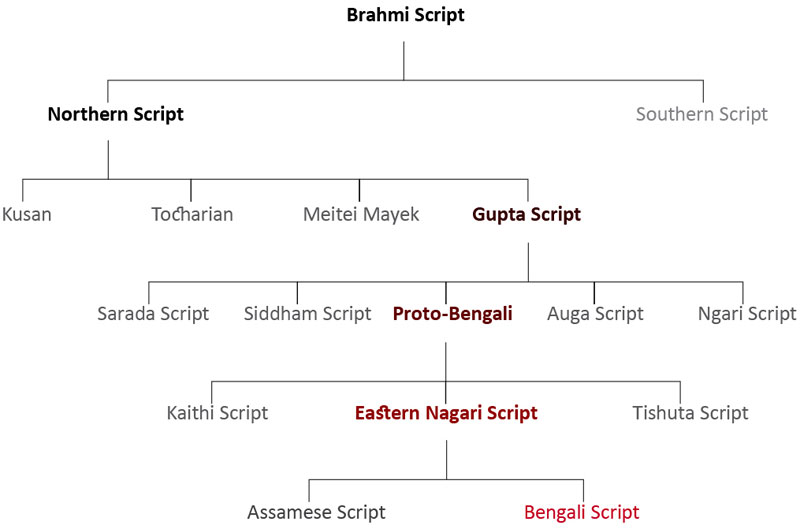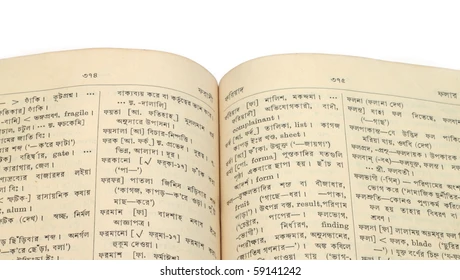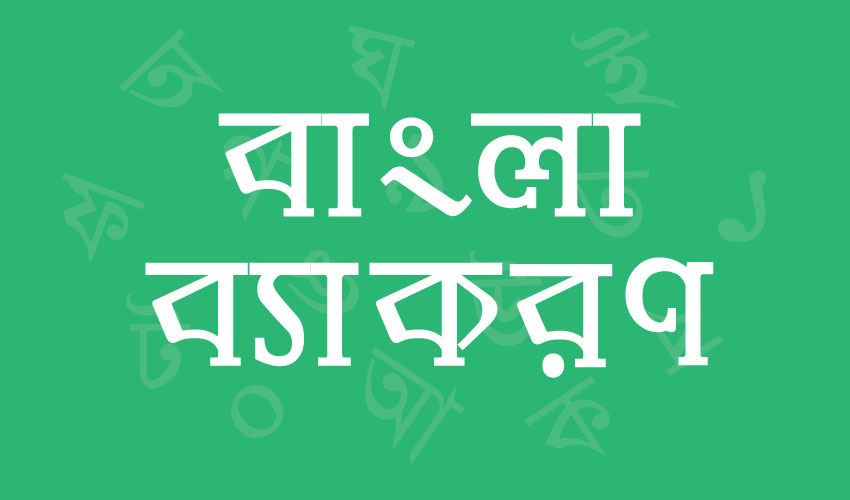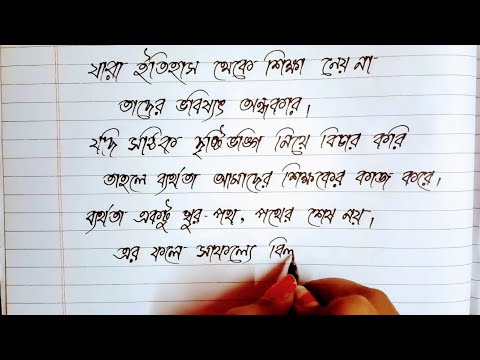Bengali, a member of the Indo-Aryan group within the Indo-Iranian branch of the Indo-European language family, holds a rich and diverse linguistic history. Spoken by over 210 million people as a first or second language, with a significant presence in Bangladesh and parts of India, Bengali has evolved over the centuries, influenced by various linguistic and cultural factors.

Origins and Early Influences
The linguistic roots of Bengali can be traced back to a shared ancestry with Oriya and Assamese. In the ancient past, these languages formed a single branch, with Oriya splitting off first and Assamese later. The Charyapadas, Buddhist mystic songs, represent some of the earliest specimens of Bengali language and literature. Interestingly, these are also claimed by speakers of Oriya and Assamese as part of their linguistic heritage.
Bengali linguists have proposed different theories regarding the language’s origin. Suniti Kumar Chatterji and Sukumar Sen suggested a 10th-century origin, deriving from Magahi Prakrit. On the other hand, Muhammad Shahidullah and his followers argue for a 7th-century origin, developing from spoken and written Gauda.

Linguistic Influences and Vocabulary
Despite being an Indo-European language, Bengali has been significantly influenced by other language families prevalent in South Asia, such as Dravidian, Austroasiatic, and Tibeto-Burman. These influences have contributed to the richness of Bengali vocabulary and its structural forms.
Studies from the 1960s and ’70s revealed that over half of the Bengali vocabulary consists of native words, while about 45 percent comes from unmodified Sanskrit words. Persian, a language from outside the Indo-European family, has also left its mark on Bengali, particularly in terms of grammatical forms.

Varieties of Bengali
Bengali exhibits two standard styles: Sadhubhasa (elegant speech) and Chaltibhasa (colloquial speech). Sadhubhasa, shaped by early Bengali poetical works, became the literary standard in the 19th century. In contrast, Chaltibhasa, based on the dialects of Kolkata and its neighbouring towns, gained prominence in the early 20th century, becoming the dominant literary language and colloquial form among the educated.
The regional diversity in Bengali is significant, with distinctions based on social class, educational level, and religion. The main dialects roughly align with historical divisions, reflecting the linguistic diversity of the Bengali-speaking world.

Bengali Grammar
Bengali grammar follows a subject-object-verb word order, with the negative particle typically placed at the end of a sentence. The copula, linking the subject and predicate, is often omitted. There are six recognised cases, and compound verbs, a distinctive feature, consist of a stem or root and a suffix. The language has three verb tenses, indicative and imperative moods, singular and plural numbers, and six forms for expressing the first, second, and third persons.
Gender in Bengali is natural, with no special declension for feminine and neuter. Adjectives remain unmodified based on the number or case of the nouns they qualify.

Writing Systems
The Bengali script, derived from Brahmi, follows a unique line of development. By the 12th century CE, the alphabet was nearly complete, though changes continued until the 16th century. Written from left to right, Bengali lacks capital letters and is characterised by conjuncts, upstrokes, downstrokes, and features hanging from a horizontal line. Punctuation marks, except one, are derived from 19th-century English.
Standardization of Bengali spelling began in 1936, initiated by the University of Calcutta. Despite efforts to establish a standardised orthography, variations persist due to different reform proposals and house styles adopted by institutions like the Bangla Academy and Visva-Bharati.
In conclusion, the history of the Bengali language is a fascinating journey marked by linguistic evolution, cultural influences, and regional diversity. As a language with deep roots in the Indian subcontinent, Bengali continues to thrive, adapting to the dynamic linguistic landscape of the modern era.
For those interested in delving into the rich linguistic tapestry of Bengali, Online Bangla Learners School is such a platform that offers valuable resources for learning and exploring this vibrant language. Whether you’re a beginner or an enthusiast, Online Bangla Learners School provides an excellent opportunity to immerse yourself in the beauty of the Bengali language.

